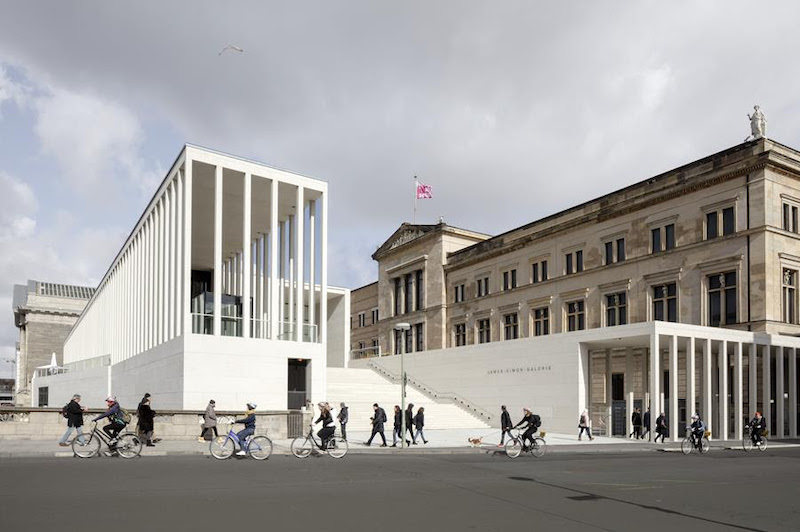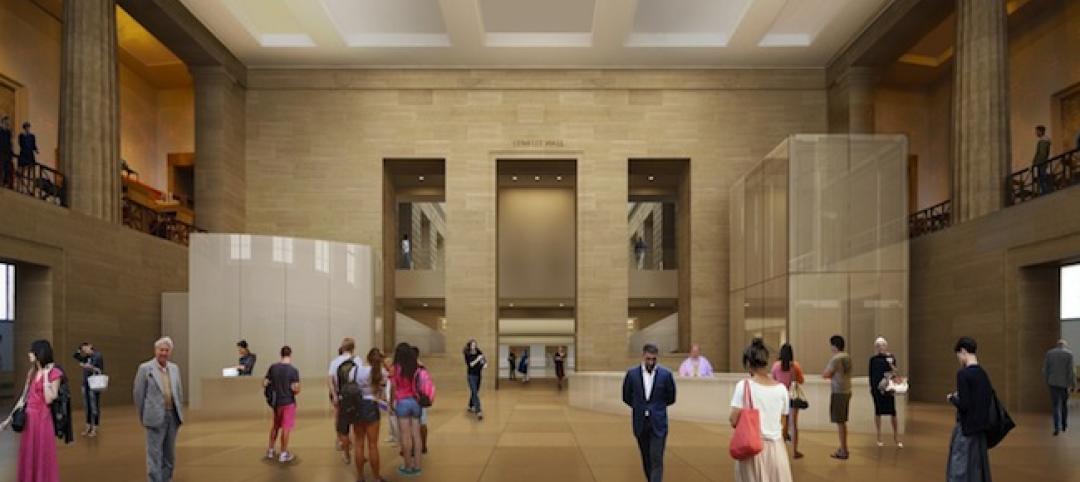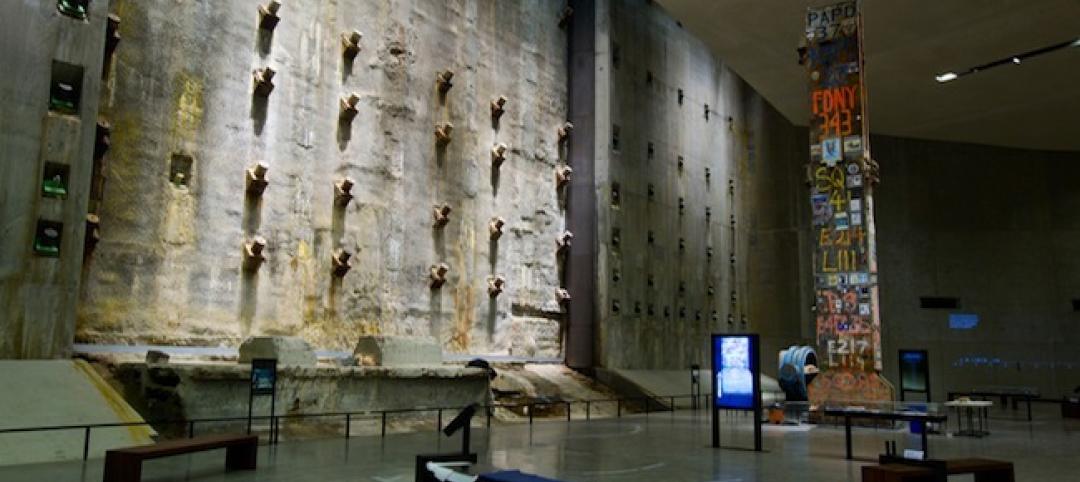The James-Simon-Galerie, the first new building on Berlin’s Museum Island in nearly 100 years, opened to the public on July 13, 2019 and acts as the new entrance building to the island. The building sits at a key location in front of or behind the Neues Museum and Pergamon Museum, complementing the interplay of spatial alignments on the island and reorientating it towards the city.
The project plays an essential role in the Museum Island master plan and links four of the five museums via the Archaeological promenade below ground (the project includes 3 above ground levels, one mezzanine, and two below ground levels). The master plan sets a framework for developing a modern museum complex while preserving the unique historical ensemble, and the James-Simon-Galerie does just that by providing a contemporary aesthetic that blends in with the surrounding museums.
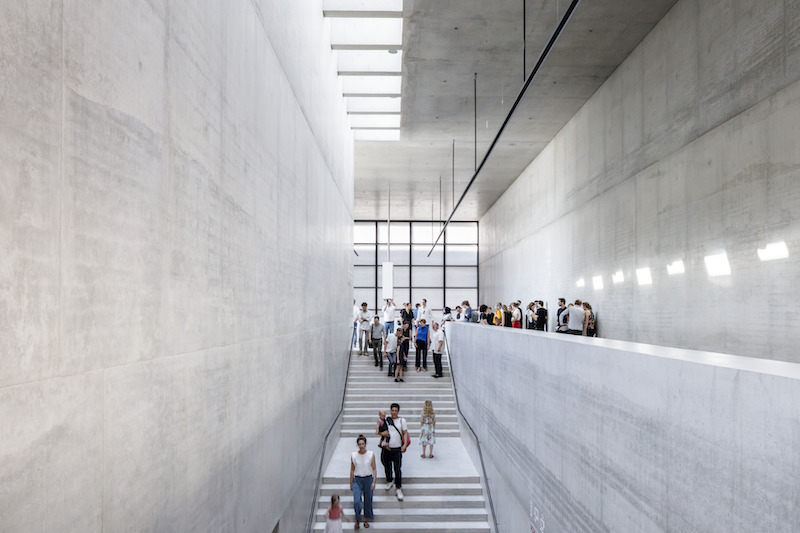 Upper foyer, main internal staircase. Photo: © Ute Zscharnt for David Chipperfield Architects.
Upper foyer, main internal staircase. Photo: © Ute Zscharnt for David Chipperfield Architects.
The primary façade material is cast stone. An aggregate made of white marble gravel from Saxony lends the entrance building its tonality, integrating it into the diversity of materials on Museum Island. Behind the building's columns, the envelop is glazed, and stabilized by eight-meter-high vertical façade supports, themselves made from glass.
See Also: POST Houston mixed-use development will include a five-acre “skylawn”
Inside, the structure is characterized by textured surfaces, in particular smooth in-situ concrete walls in fair-face concrete and floors made of bright Crailsheim shell limestone. The mezzanine floor and the auditorium have smoked oak parquet flooring. Bronze was used for window profiles, doors and handrails throughout the building. A copper braid was used on selected ceilings, including in the café.
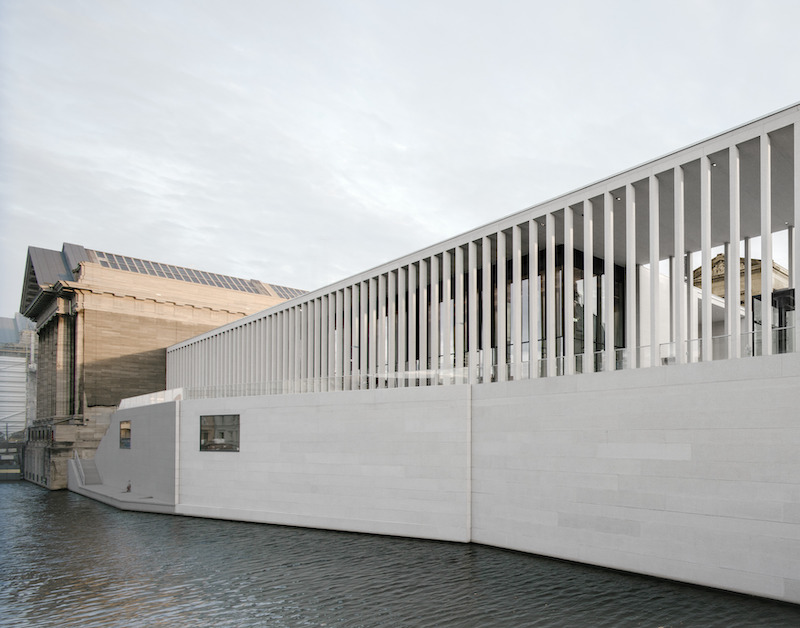 Plinth and tall colonnade (92 columns). Photo: Photo: © Simon Menges.
Plinth and tall colonnade (92 columns). Photo: Photo: © Simon Menges.
The 10,900-sm building was designed to welcome large numbers of visitors and to house all the facilities required by contemporary museum-goers. The James-Simon-Galerie also includes divisible temporary exhibition space and a 350-seat auditorium. Outside of museum hours, a grand staircase, a terrace with café, and a new courtyard will be accessible to the public.
Revolving doors and draft lobbies help minimize heat loss despite the expected high frequency of visitors. The use of radiant building components implemented in the plant technology of the building uses thermally activated surfaces to cover the base load in heating and cooling, reducing the air volume flows. A thermally active and acoustically absorbent ceiling with a copper mesh cladding, which was used in selected areas, also has a positive effect.
Museum Island has been a UNESCO World Heritage site since 1999 and is visited by about three million people every year.
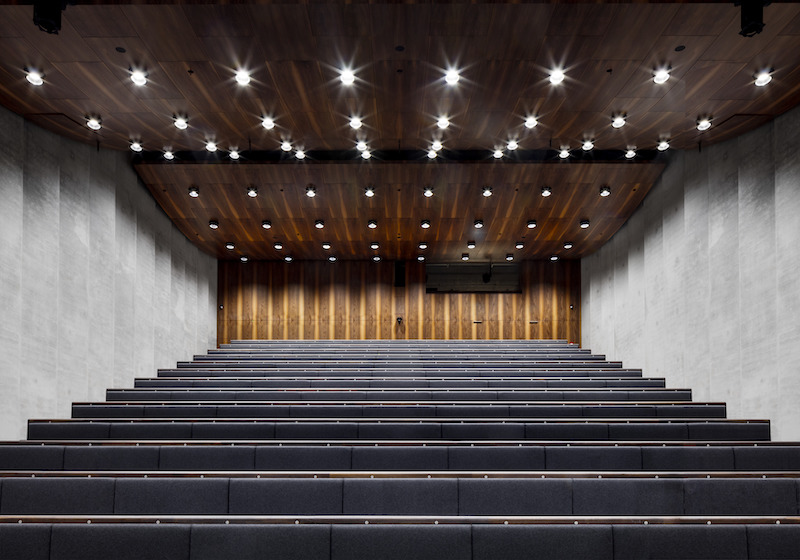 Auditorium. Photo: © Ute Zscharnt for David Chipperfield Architects.
Auditorium. Photo: © Ute Zscharnt for David Chipperfield Architects.
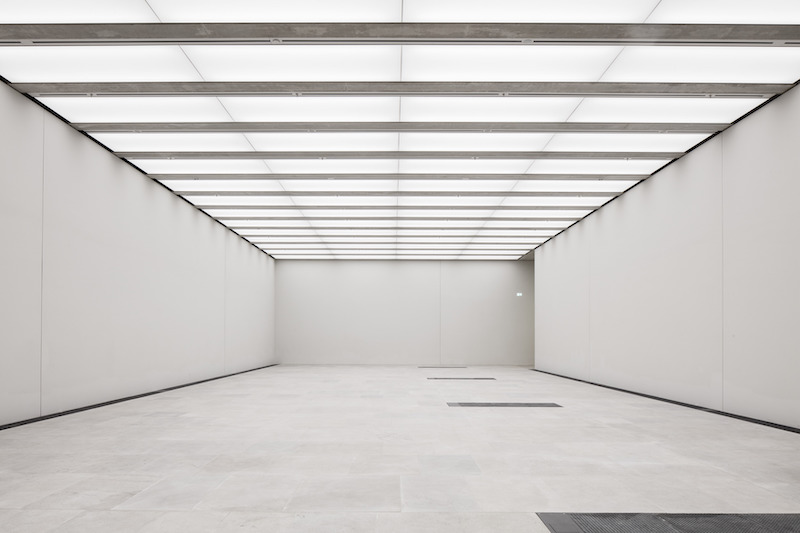 Temporary exhibition space. Photo: © Ute Zscharnt for David Chipperfield Architects.
Temporary exhibition space. Photo: © Ute Zscharnt for David Chipperfield Architects.
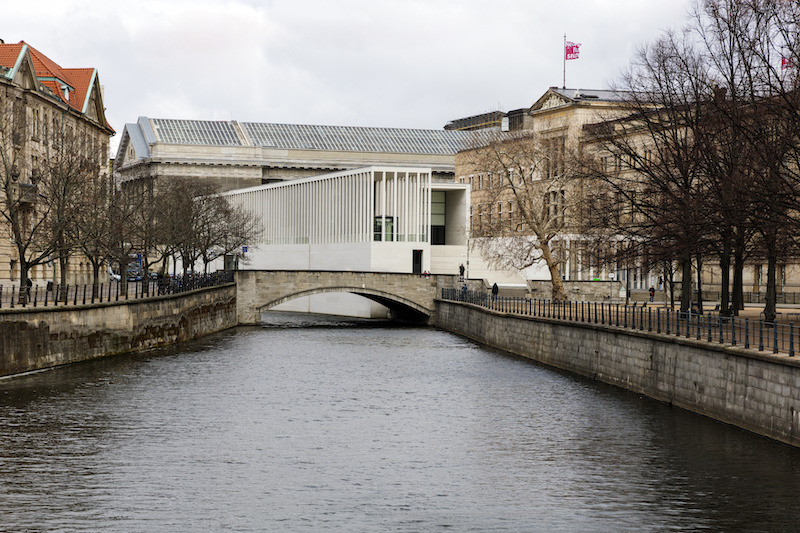 View from Schlossbrücke. Photo: © Ute Zscharnt for David Chipperfield Architects.
View from Schlossbrücke. Photo: © Ute Zscharnt for David Chipperfield Architects.
Related Stories
| May 23, 2014
Big design, small package: AIA Chicago names 2014 Small Project Awards winners
Winning projects include an events center for Mies van der Rohe's landmark Farnsworth House and a new boathouse along the Chicago river.
| May 22, 2014
IKEA to convert original store into company museum
Due to open next year, the museum is expected to attract 200,000 people annually to rural Älmhult, Sweden, home of the first ever IKEA store.
| May 21, 2014
Gehry unveils plan for renovation, expansion of Philadelphia Museum of Art [slideshow]
Gehry's final design reorganizes and expands the building, adding more than 169,000 sf of space, much of it below the iconic structure.
| May 20, 2014
Kinetic Architecture: New book explores innovations in active façades
The book, co-authored by Arup's Russell Fortmeyer, illustrates the various ways architects, consultants, and engineers approach energy and comfort by manipulating air, water, and light through the layers of passive and active building envelope systems.
| May 19, 2014
What can architects learn from nature’s 3.8 billion years of experience?
In a new report, HOK and Biomimicry 3.8 partnered to study how lessons from the temperate broadleaf forest biome, which houses many of the world’s largest population centers, can inform the design of the built environment.
| May 15, 2014
First look: 9/11 Memorial Museum opens to first-responders, survivors, 9/11 families [slideshow]
The 110,000-sf museum is filled with monumental artifacts from the tragedy and exhibits that honor the lives of every victim of the 2001 and 1993 attacks.
| May 13, 2014
19 industry groups team to promote resilient planning and building materials
The industry associations, with more than 700,000 members generating almost $1 trillion in GDP, have issued a joint statement on resilience, pushing design and building solutions for disaster mitigation.
| May 13, 2014
Libeskind wins competition to design Canadian National Holocaust Monument
A design team featuring Daniel Libeskind and Gail Dexter-Lord has won a competition with its design for the Canadian National Holocaust Monument in Toronto. The monument is set to open in the autumn of 2015.
| May 11, 2014
Final call for entries: 2014 Giants 300 survey
BD+C's 2014 Giants 300 survey forms are due Wednesday, May 21. Survey results will be published in our July 2014 issue. The annual Giants 300 Report ranks the top AEC firms in commercial construction, by revenue.
| Apr 29, 2014
USGBC launches real-time green building data dashboard
The online data visualization resource highlights green building data for each state and Washington, D.C.


